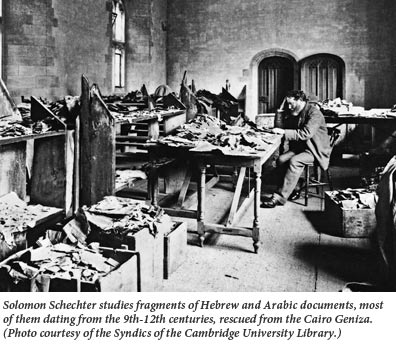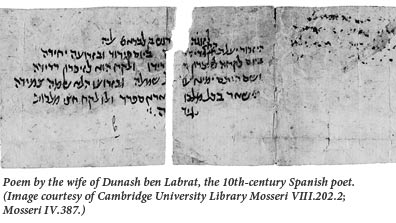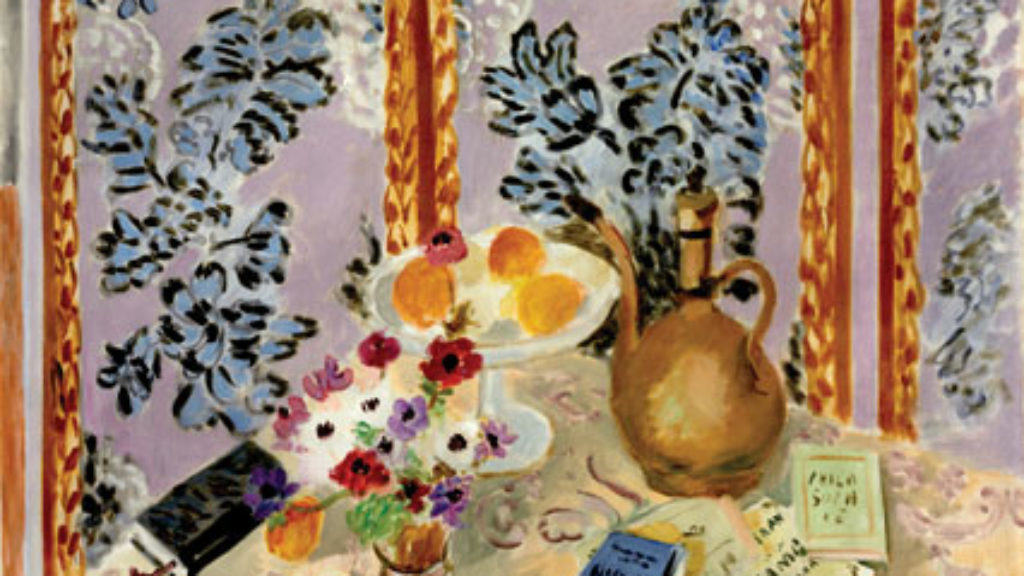Buried Treasure
In 1896, two Scottish sisters came to Solomon Schechter, then a Reader in Talmudic and Rabbinic Literature at Cambridge University, and showed him some moldy scraps of manuscript they had purchased in Egypt. Schechter immediately recognized them as fragments of the long-lost Hebrew original of the Apocryphal book of Ben Sira (known in the Christian tradition as Ecclesiasticus). Soon thereafter he rushed off to Cairo, where he found the enormous cache of discarded manuscripts that had been deposited in the geniza (a traditional storage place for worn or discarded Hebrew texts containing the Divine Name) of the Ben Ezra Synagogue of Fustat (Old Cairo).
The approximately 200,000 pieces he brought back to Cambridge constituted the largest collection of medieval Jewish documents ever assembled. What made the Cairo Geniza different from every other geniza was that it contained not only Hebrew and Aramaic religious writings, such as Torah scrolls, prayerbooks, and tefillin and mezuza parchments, but also secular materials in a several languages and scripts (mainly in Judeo-Arabic). Works of Jewish scholarship and literature that had been lost were rediscovered, and a formative period in Jewish history was illuminated. This was the age of the Exilarchs (Babylon-based “heads of the diaspora” who traced their lineage back to the royal House of David); of Jewish philosophers and theologians such as Saadya Gaon and Maimonides; of sublime poets from the Golden Age of Sephardic Hebrew letters such as Shmuel Ha-nagid and Yehuda Halevi, and of Jewish merchants who sailed back and forth across the Mediterranean and from Egypt to places as far as India and Ceylon.

The broad outlines of this tale of discovery and rescue are quite familiar, having been repeated in academic and semi-academic books and articles many times over. Scholars like Stefan Reif, the author of A Jewish Archive from Old Cairo, have done an excellent job of describing the collection in Cambridge and its significance for Jewish scholarship. But the real behind-the-scenes story of the Geniza and the Western scholars who retrieved and studied it is—not surprisingly—far more complicated and far more fascinating. It is also a very human story, as the husband-and-wife team of Peter Cole and Adina Hoffman show in their charming and unobtrusively erudite new book Sacred Trash.
Using published memoirs, unpublished diaries, personal correspondence, archival sources, and interviews with friends, families, students, and colleagues, Hoffman and Cole have produced colorful portraits of the Geniza scholars, their intellectual passions, their scholarly agendas and controversies, and in some cases, their personal egos and jealousies. Although they have adorned the cover of their book with the iconic and carefully self-staged photograph of Solomon Schechter, “a rabbinic version of Rodin’s The Thinker,” sitting and contemplating the Geniza treasure trove at Cambridge, they don’t indulge in hagiography. They present him as a flesh-and-blood human being, a visionary scholar, a loving husband, a committed Jew, but also “a man of no small appetites” who could “orchestrate, on the sly, his Indiana Jones-like expedition to Egypt.”
Hoffman and Cole are equally skillful in portraying other pioneer historians of the Geniza. Wisely, they devote an entire chapter to the great Shelomo Dov Goitein. As the authors rightly observe, if Schechter was the discoverer of the Cairo Geniza, Goitein was its “rediscoverer.” While most of the work of scholars before Goitein had been devoted to the literary and spiritual texts of the Geniza, Goitein was the first to see the historical value of what many regarded as “worthless” material for the reconstruction of the lives of ordinary people. Basing himself on more than 25,000 seemingly humdrum documents that included merchants’ correspondence, bills of lading, trousseau lists, communal and court records, deathbed wills and declarations (mainly in Judeo-Arabic), Goitein produced a panoramic five-volume study of Mediterranean life in the High Middle Ages entitled A Mediterranean Society: The Jewish Communities of the Arab World as Portrayed in the Documents of the Cairo Geniza. It is one of the great achievements of historical and humanistic scholarship of the 20th century, a work that has shed a bright new light upon a little-known but formative period in Jewish history. Hoffman and Cole fully appreciate Goitein’s significance, and also understand his special role as a teacher who trained or inspired an entire generation of scholars to continue studying the historical Geniza.

Hoffman and Cole devote as much attention to the spiritual and literary side of the Geniza as they do to the mundane. Cole himself is a noted poet and translator as well as the editor of the prize-winning anthology The Dream of the Poem: Hebrew Poetry from Muslim and Christian Spain, 950-1492, and many of Sacred Trash‘s quotations from medieval Hebrew poetry represent his own translations. Cole and Hoffman’s explanations of the nature of piyyut (Hebrew liturgical poetry)—both the earlier Byzantine and later Sephardic—nicely elucidate an extremely complicated subject for the non-specialist. The portraits of scholars such as Israel Davidson, Menahem Zulay, Hayyim Schirmann, and Ezra Fleischer, who devoted themselves to recovering, indentifying, and interpreting the enormous poetic corpus from the Geniza, are sensitively drawn and the nature of their individual contributions are given their due. Not only did they add to the repertoire of renowned poets such as Dunash ben Labrat, Solomon ibn Gabirol, and Moses ibn Ezra, but also retrieved the lost works of poets who were known by name only, such as Joseph ibn Abitur and Menahem ben Saruk. They also revealed the hitherto-unknown work of the only female poet so far found in the Geniza, the wife of Dunash ben Labrat. Her moving lament for her absent husband still moves the reader eleven centuries later:
Will her love remember his graceful doe,
her only son in her arms as he parted?
On her left hand he placed a ring from his right,
on his wrist she placed his bracelet.
As a keepsake she took his mantle from him,
and he in turn took hers from her.
If the authors’ rendition of Hebrew verse is exquisite, their expository prose is charmingly breezy. They describe a palimpsest “as a kind of medieval Etch A Sketch pad,” and quite rightly compare some of the work of Geniza scholars to the popular television gameshow Jeopardy!, where the answer is provided, and the trick is to come up with the question that prompted it. Though aimed at the wider public, Sacred Trash has much to satisfy the academic reader as well. The authors’ grasp of the scholarly issues in Geniza research and the rich, discursive endnotes show that they have read a great deal of the academic literature in Hebrew and English. Most readers will skip the endnotes, but they are well worth reading for anyone who wants to pursue the topic.
Hoffman and Cole have fittingly chosen to end their account of the founding fathers of Geniza research with Goitein. However, in a brief Afterword, they survey some of the recent scholarly trends, including the study of magic texts, and ongoing efforts to preserve and digitize the documents. The Cairo Geniza’s “sacred trash” will continue to yield historical treasure for quite some time.
Suggested Reading
Shabbtai at Seventy
Stuart Schoffman traded Malibu for Jerusalem, "smack in the middle of the First Intifada."
Intense Listening: The Poetry of Harvey Shapiro
Harvey Shapiro, who grew up in an observant Jewish family, was a connoisseur of distances and silences.

Matisse and His Jewish Patrons
Some of Henri Matisse's earliest and most committed supporters (and buyers) were Jewish. That might explain why Histoires Juives, a book of Yiddish jokes in French translation, and other Jewish items can be found in his paintings.
What Jesus Wasn’t: Zealot
When Fox News' Lauren Green asked Reza Aslan why, as a Muslim, he would write a book about Jesus, he answered that it was his job as an historian of religions—which would have been a good answer, if it had been true.
Comments
You must log in to comment Log In